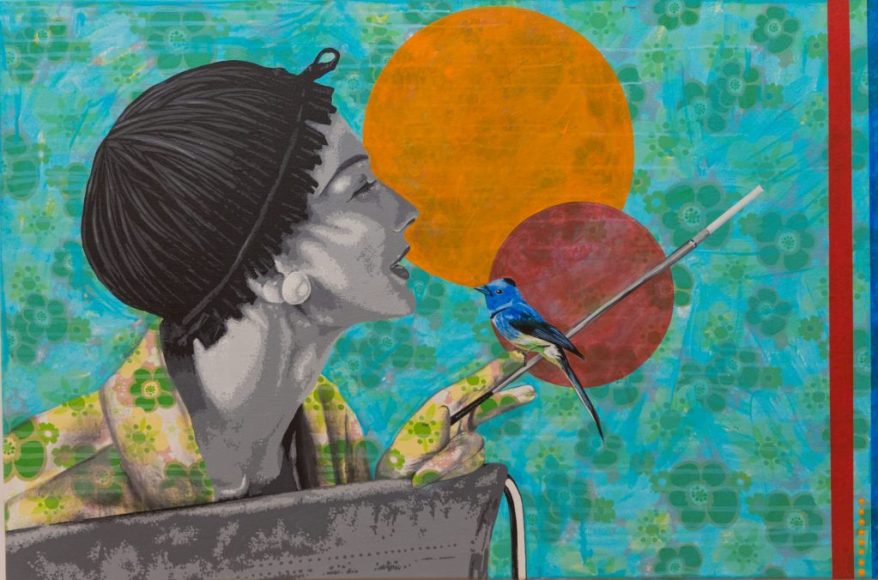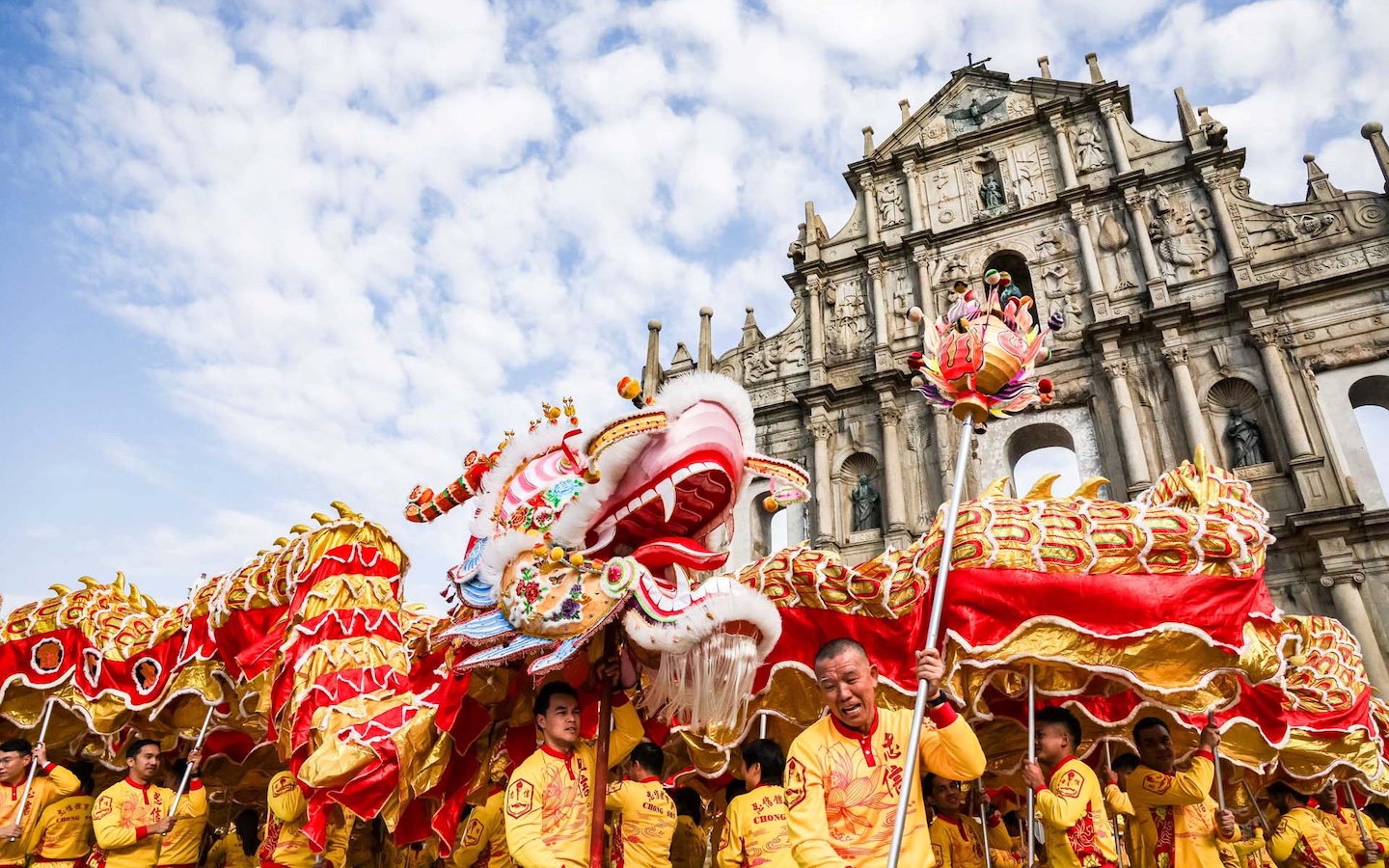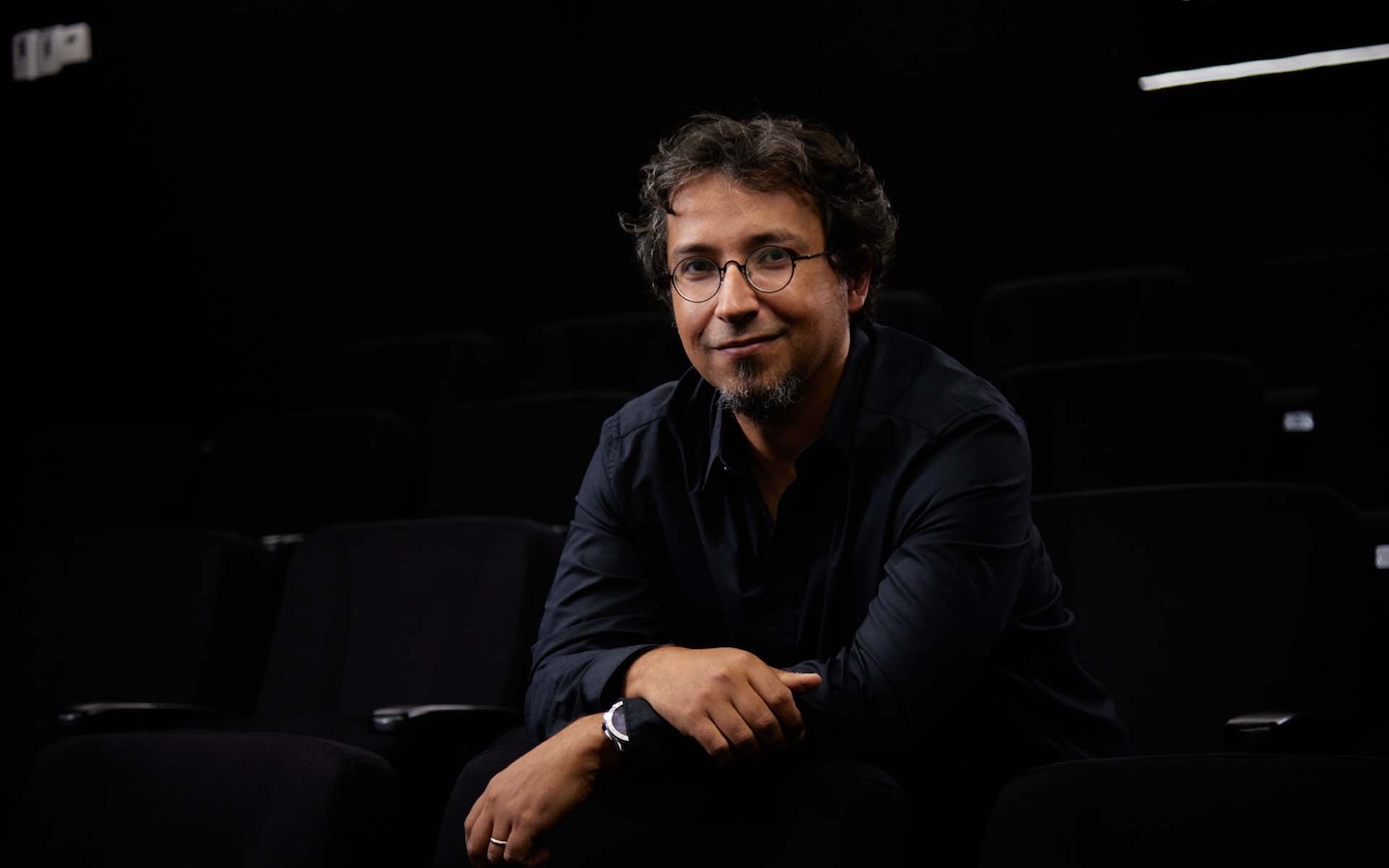TEXT Marco Carvalho
ArtFem features 142 artworks by a diverse array of women artists from around the world. The Women Artists – 1st International Biennial of Macao seeks to fill a void in spotlighting women artists and become the biggest of its kind in the world.
“She needs to know how to love,
She needs to suffer for her love
And to be no more than forgiveness”
Carlos Marreiros likes to quote the Brazilian poet Vinicius de Moraes to explain why there is an impending sense of justice in the endorsement of ArtFem. The massive exhibition brings together the works of more than a hundred women artists and marked the opening of its inaugural edition in early March at the Macao Museum of Art.
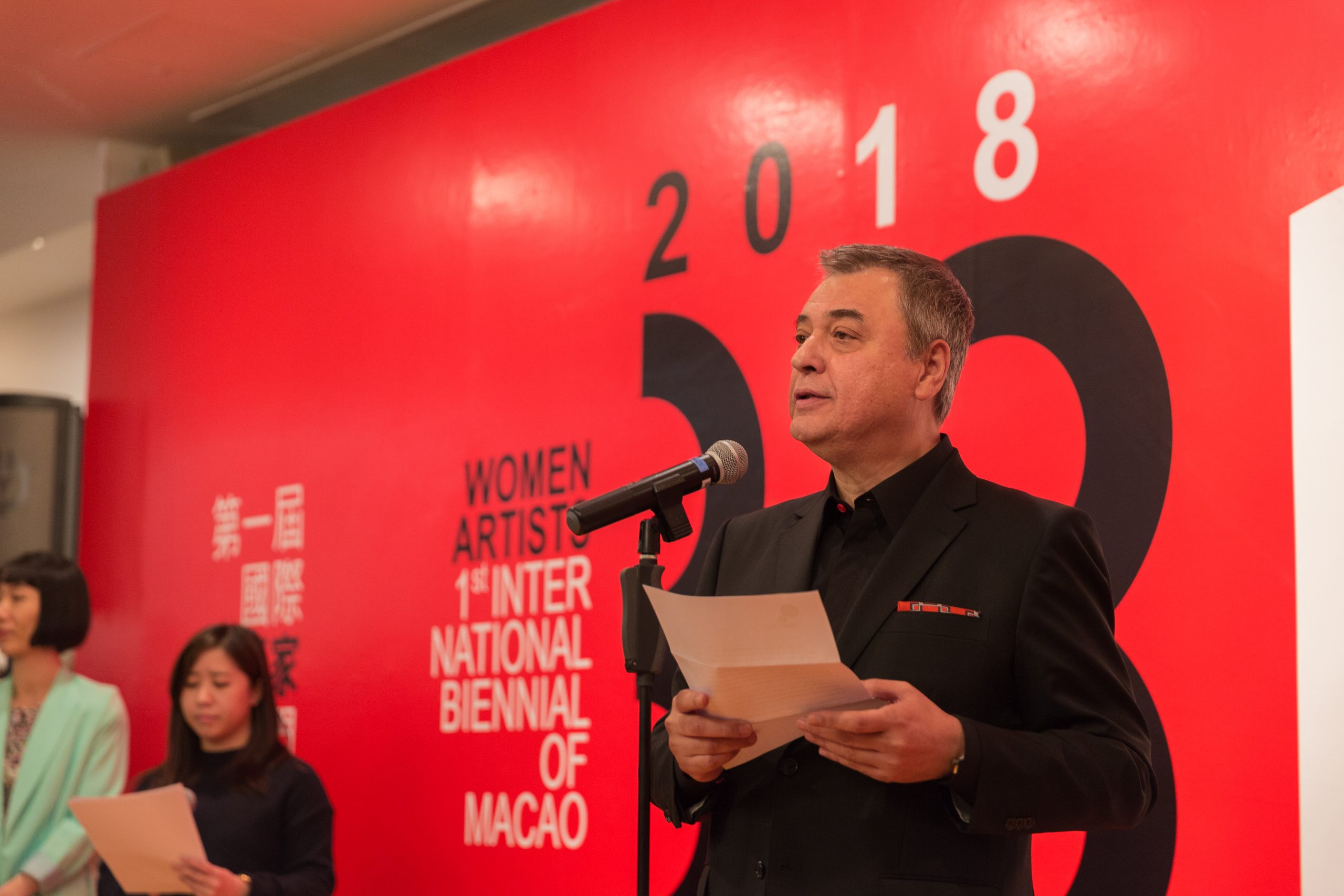
He invoked the poetry of Moraes in the press conference announcing the event, known formally as the Women Artists – 1st International Biennial of Macao. He did it again in the short speech he proclaimed before opening the biennial, and he does it in our interview, a rebellious cigarette dangling from the corner of his mouth.
“Our society is still chauvinistic, male-oriented,” he asserted, before taking a prolonged puff on his teetering smoke. “Adam was the first to be created. Only then Eve came to be and she was made out of a rib, Adam’s rib. You know how it goes, don’t you?”We do, all too well. A renowned architect and an artist himself, Marreiros acknowledged the existence of what he termed an “ignominious imbalance” between the contributions made by women and the degree of public recognition they receive.
“Their contribution is remarkable. I am not even talking specifically about arts. Women have been responsible for major breakthroughs in science, in medicine and even in architecture,” he remarked. “In literature, for instance … How can one measure the extent to which women have influenced the way we all see the world?”
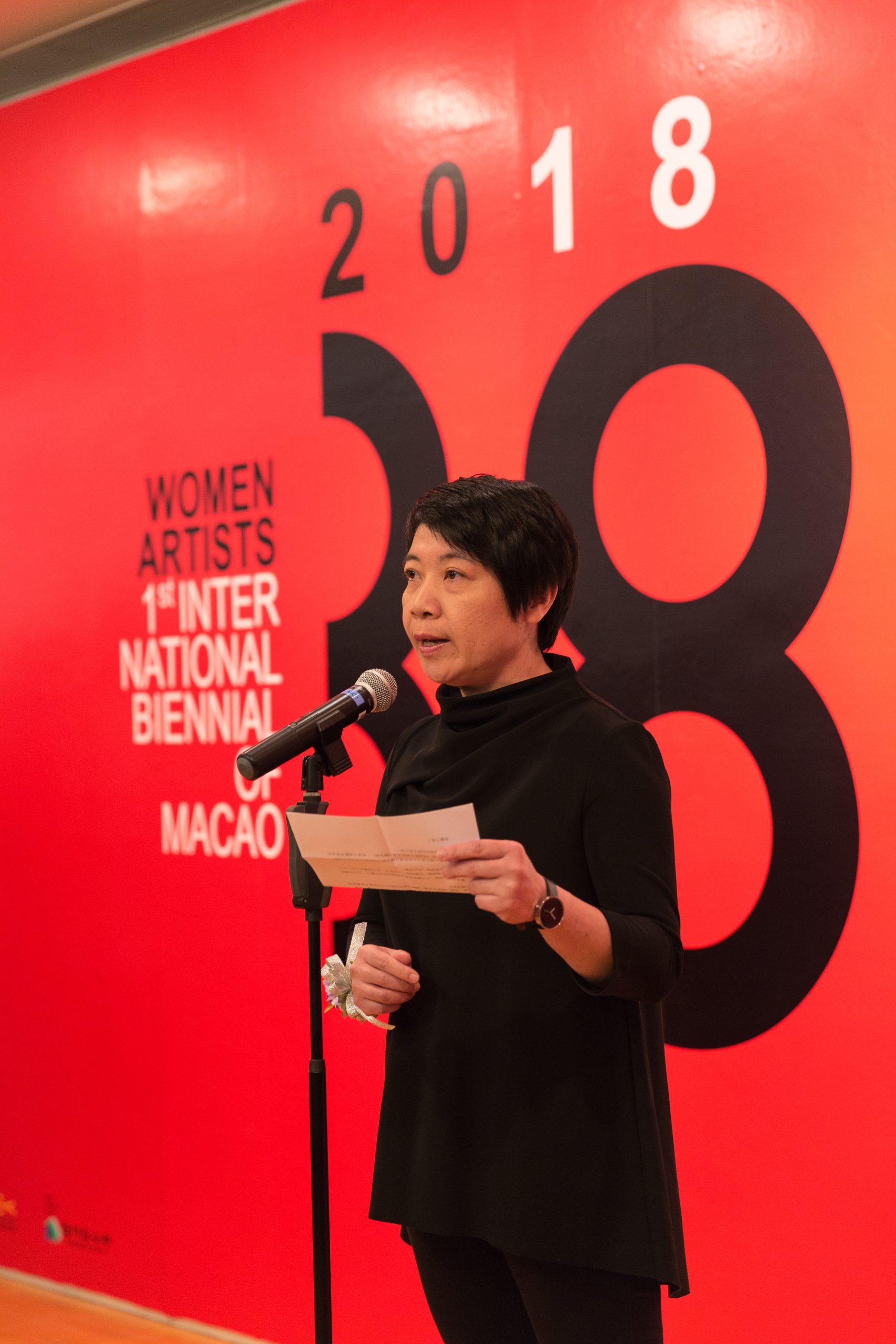
Marreiros, who is also the director-general of Albergue SCM, a non ‑profit organisation which aims to enhance local art and cultural and creative development, sees the exhibition as the most visible and immediate way to pay tribute to the women of his life – “My mother, my grandmother, my daughters, women of enormous strength and sensitivity” – but also to the intelligence and the generosity of spirit that women, in a broad sense, have demonstrated throughout time.
“Our intention is to show women the respect they deserve. The time is ripe to honour the value of women and what they contribute, but we should do it at all levels, in domains like science, medicine or even architecture,” Marreiros asserted. “We took in our hands the task of valuing women in fields like the arts world or education. Macao can play a very important role in this process, I am utterly convinced.”
Marreiros had been nurturing the idea of organising a big international event to showcase the works and talent of women artists for more than 20 years, but only recently did he witness a long-desired alignment of the right conditions. The first edition of the Women Artists – International Biennial of Macao was made possible through the support of the Cultural Affairs Bureau, by Macao Foundation – who financially supported the event with a MOP1.5 million (US$185,670) donation – and, most importantly, by the Macao Museum of Art (MAM).
The biggest and most relevant art institution in the city, MAM partnered with Albergue SCM to set up the exhibition. The inaugural edition of the biennial planned and assembled in little more than six months, features 142 artworks by 132 female artists from 22 countries and regions, most of which had to be collected and brought to Macao in time to be displayed at the exhibition.
Carlos Marreiros might be the mastermind behind ArtFem, but it was José Isaac Duarte and Lina Barradas, on behalf of Albergue SCM, and Margarida Saraiva of MAM, that pulled off the miracle of assembling the biennial on such short notice.“
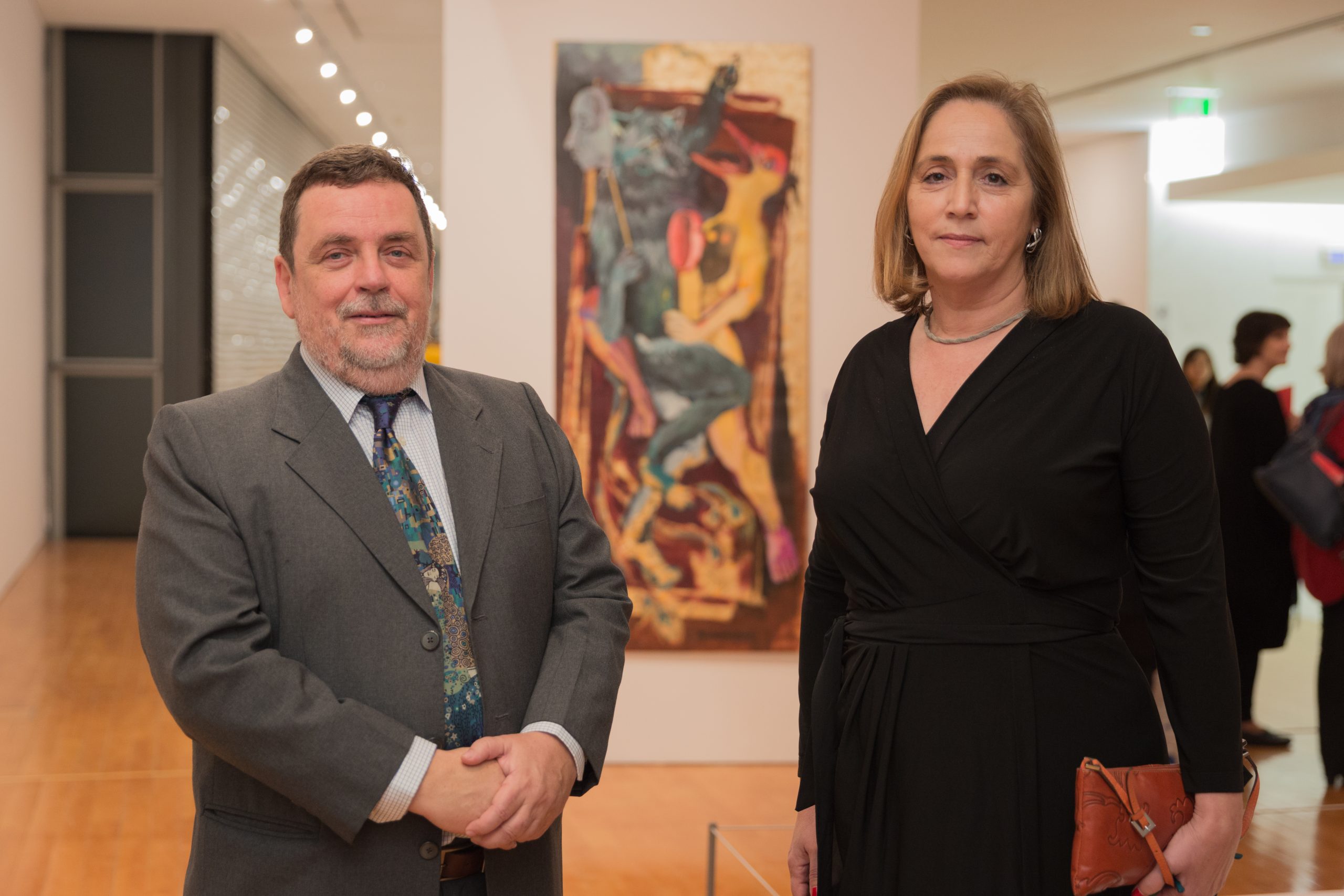
The last six months were very, very stressful. It’s sort of a miracle that we have more than one hundred works on the wall today,” Duarte told Macao Magazine, conveying relief for being able to bring to Macao the works of artists as relevant as Graça Morais, Madalena Pequito, Duda Correia or Lin Hairong.
“I think we managed to build a coherent and consistent exhibition, given the limitations we faced. With some more time, with other kinds of resources, this first edition of ArtFem would have been very different,” Duarte explained as he nodded approvingly to his co‑‑curator, Lina Barradas.
For Barradas, the six months that led up to the opening of the biennial were nothing short of a marathon. To bring together the artists and works that best suited the exhibition’s concept, the two curators visited dozens of art fairs and galleries and dispatched hundreds of emails, some of which were never answered.
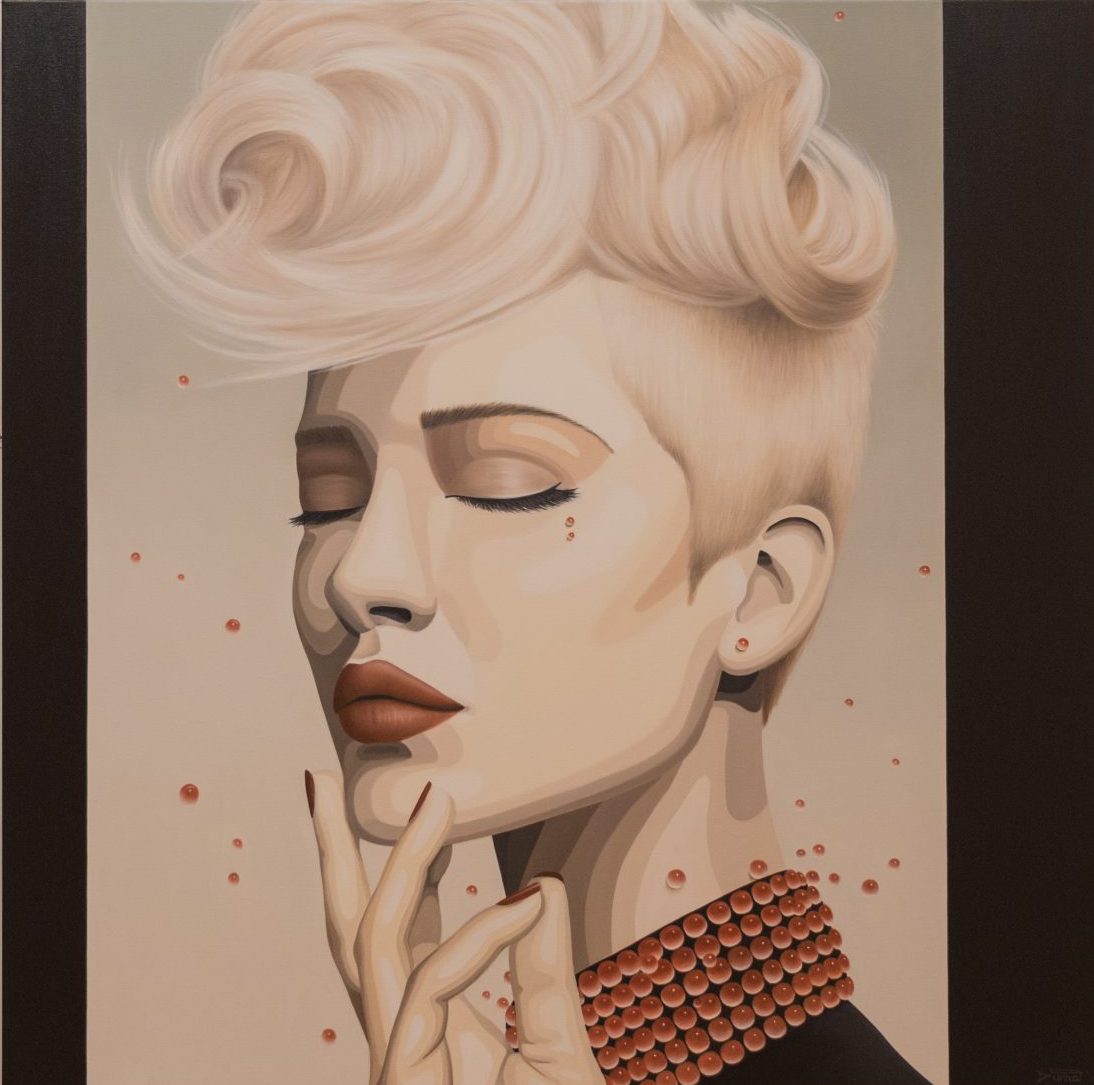
“We tried to reach way over one hundred artists. One of the problems was that we were forced to set a deadline: the 20 December. With the exhibition scheduled to open shortly after Chinese New Year, we had to make sure that we would have a catalogue ready to deliver at the opening day,” Barradas explained. “That meant the catalogue had to be ready around 8 January.”Of the 142 works of art that were selected for the first edition of the biennial, only a few dozen were already in Macao.
Of these, the majority – 36 – belonged to the collection of MAM. The museum, directed by Chan Kai Chon, took the invitation made by Carlos Marreiros and Albergue SCM as a challenge – and a valuable opportunity to promote the debate around women’s role and place in the contemporary art scene.
“We would like this exhibition to have the power to make people think, to make people question themselves,” Chan explained. “We are aware that this exhibition is only a small step in the pursuit of greater equality, but it will be a worthy effort if it manages to arouse debate on whether art is any different from the other fields concerning the opportunities it gives women.”
Despite the fact that the museum’s share in the exhibition constitutes less than one‑third of all the pieces on display, the works selected by Saraiva offer a solid introduction to Macao’s recent history. With the exception of some works by Peng.
It [Artfem] will be a worthy effort if it manages to arouse debate on whether art is any different from the other fields concerning the opportunities it gives women.
Lina Barradas
Xiaoying, an artist born in the 1920s, most of the older works chosen by Saraiva belong to Portuguese artists like Maria Helena Vieira da Silva, Lourdes de Castro or Mozambique‑‑born Bertina Lopes. The Macao Museum of Art, she recalled, inherited these and other works from the collection of its predecessor, the Luís de Camões Museum.
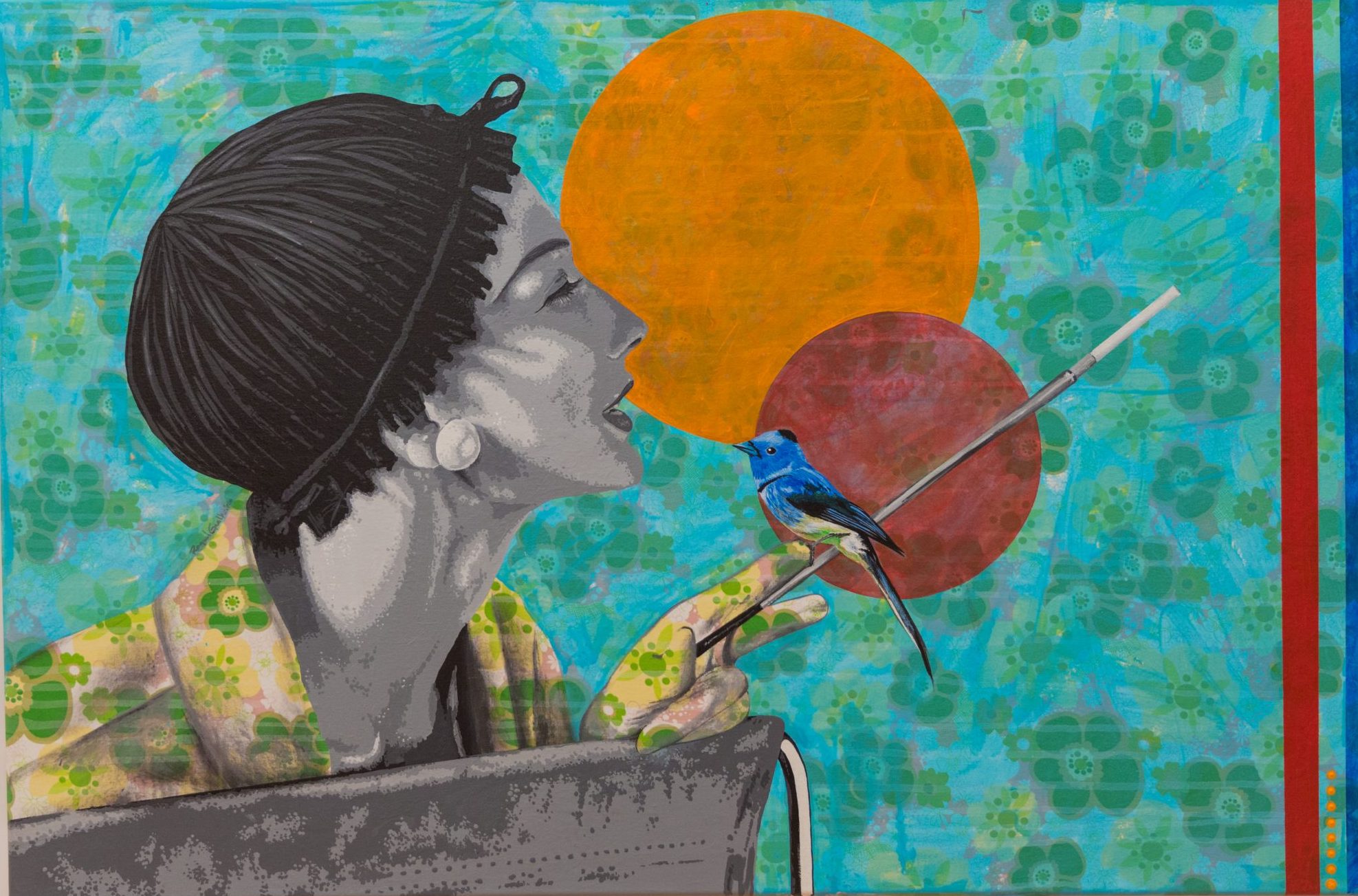
The local contemporary art scene is represented by the creations of artists such as Peng Yun, Bianca Lei, Alice Kok and Wong Weng Io. In addition to allowing the museum to reorganise their own collection in a more accurate way, the first edition of ArtFem gave the institution a well‑received impulse to reassert itself with the shape, pace, and protagonists – both old and new – of the local art scene.
“Some of the artists we have included in our share of the exhibition were not yet part of the museum’s collection,” Saraiva explained. “In a certain sense, it was a blessing because, by acquiring their works, we were able to invest the exhibit with a new dimension and to show contemporary variations of artistic expression, like projects of video art and installation art.”
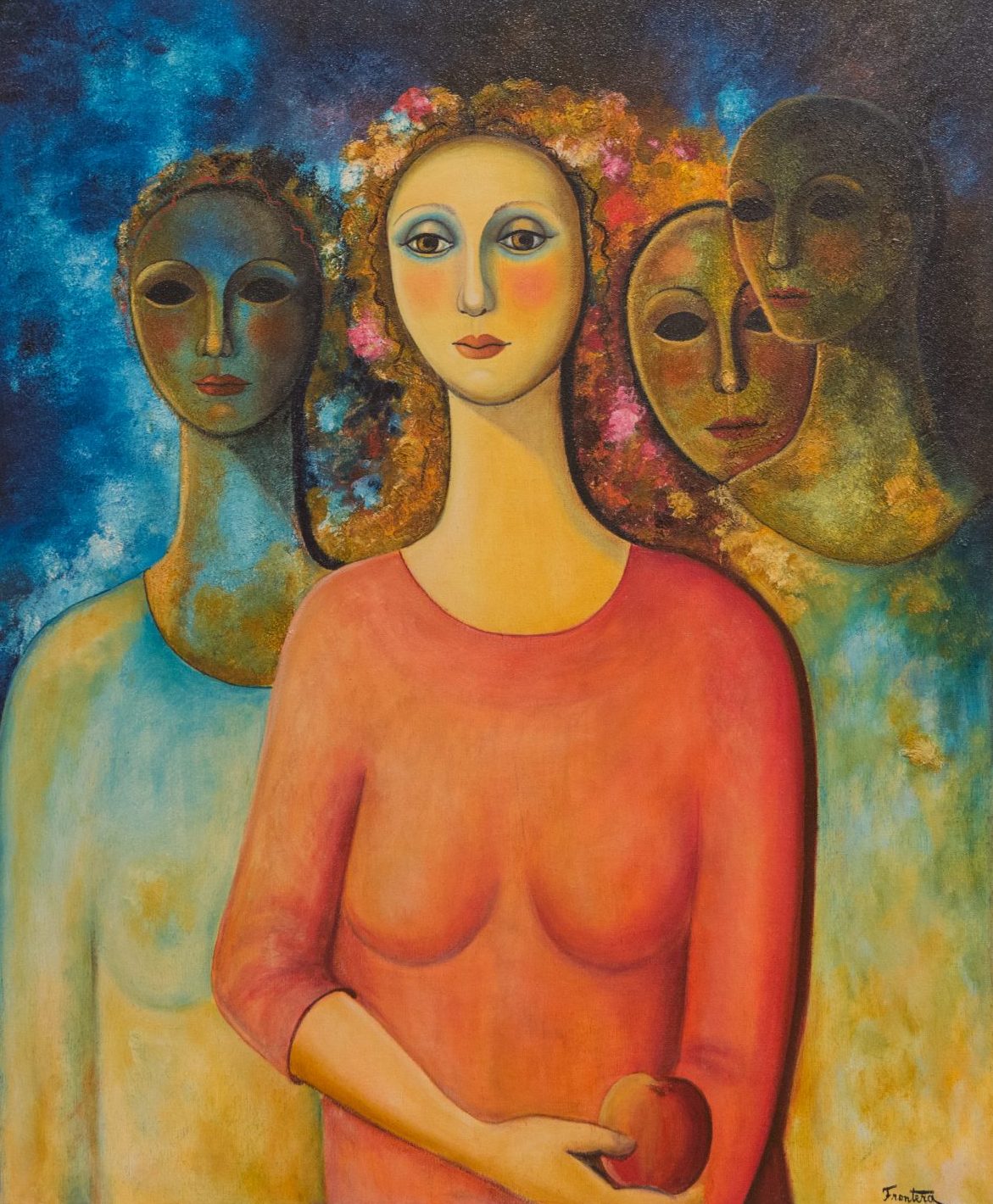
Alice Kok may well be the only one of the 132 creators represented in the biennial that produced an artwork specifically for the event. The president of one of the biggest art collectives in Macao, the Art For All Society, Kok has sold some of her works to MAM in the last few years, but none that quite conveyed the kind of message she wanted to express through such an important event.
“We cannot deny that our world is still ruled by men, right? We still live in a patronising, paternalistic society, in which men enjoy a certain kind of fatherly authority culture,” Kok said. “We grow up thinking that authority is a male thing, that women are supposed to be submissive. This kind of culture remains embedded, or rooted, in the way we see the world for the time being.” The 40 ‑year ‑old artist acknowledged that some changes have happened in the last few years, and others are ongoing. “I hope these circumstances can be changed little by little. We need balance.”
Strategically placed by the entrance of the exhibition, her installation – a silicon nipple that vanishes as soon as someone tries to touch it – attracted attention on the opening day of the Women Artists – 1st International Biennial of Macao on 8 March, International Women’s Day.
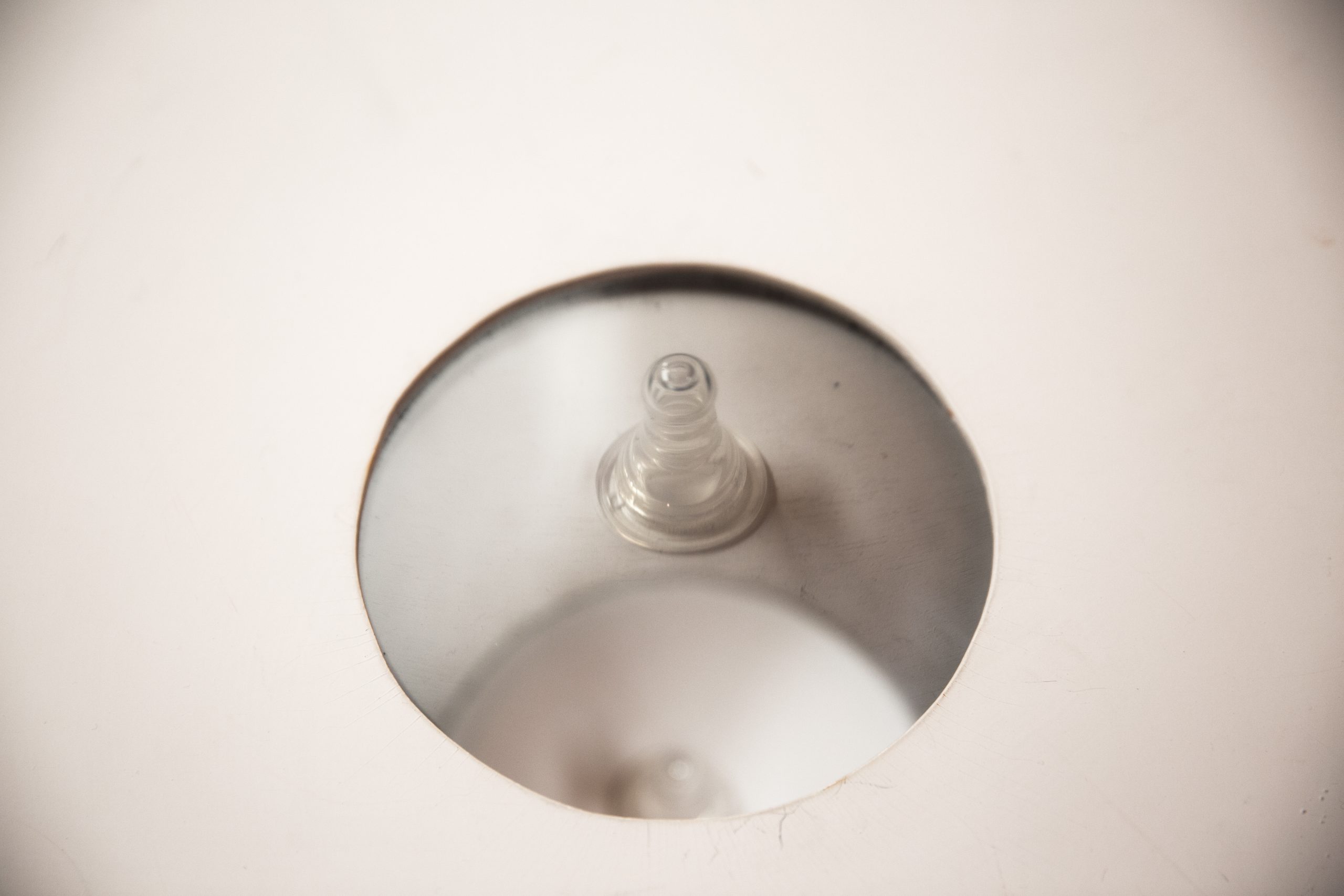
A simple illusion, Kok’s work is a powerful reminder of how elusive the idea of gender equality still is in a world where women’s contributions remain largely overlooked. “When the Macao Museum of Art contacted me, they had the intention to exhibit a video installation that I did a few years ago,” she explained. “We talked more in depth about the concept of this exhibition, and I suggested that maybe another work would be more relevant for this occasion.”
The elusiveness of gender equality is a trend that still bothers Victoria Willing. The 57‑year‑old actress, voice artist, and writer was in Macao to represent her mother, Dame Paula Rego, at the opening of the biennial. Born in Portugal but a British citizen by marriage, Rego is one of the most accomplished figures in contemporary art and by far the most skilled and successful Portuguese artist of the last half century. Most importantly, Rego’s women – and she mostly depicts women in her works – are sad and angry, worried, aghast or vengeful, and all of them disturbingly human. It was, therefore, no surprise that the artist accepted Carlos Marreiros’ invitation to become the godmother of the inaugural edition.
“I think it is a marvellous idea to have a biennial for women and I am very honoured to be the godmother,” Rego, now 83, wrote in a message read by her daughter at the opening ceremony. “It’s about time that women got recognition for their work; they have their own stories to tell and a different perspective on the world. I hope the climate for women artists keeps improving.”
A part of the road to improvement Rego addressed in her short statement is already covered, but the remaining one, predicts Willing, won’t be any easier. “Men are still the bosses. Men are still in charge. Nobody is saying to get rid of all the men and put women in their place. It’s just balancing it out, making it equal,” Willing contended. “As you were saying, there are no well‑known women artists or well‑‑known women engineers or well‑known women politicians – or only a few compared to men.

“My mother, she struggled for so many years. She couldn’t sell anything and partly, that happened, because she was a woman; she wasn’t a part of the boys’ club,” Willing explained. “She’s a good symbol of perseverance and strength.”
ArtFem might change things a little, the artist and writer recognised – “The exposure will help to some extent” – but the road ahead will be difficult if the goal is equality and not merely inclusion. Willing dreams of a day when women artists won’t need specialised events to access a platform or garner well-deserved accolades. “One day… [women] will be just artists, like anybody else. That’s when you get equality.”
Although the main purpose of ArtFem is to show women “the recognition they deserve,” Carlos Marreiros doesn’t hide his own ambition. He envisions the event becoming the most important of its kind: “We want this event to become a world‑level event in only three editions. With the end of Incheon’s biennial, the only international event of the kind is the Whitney Houston Biennial and its purpose is quite different,” he explained.
Men are still the bosses. Men are still in charge. Nobody is saying to get rid of all the men and put women in their place. It’s just balancing it out, making it equal.
Victoria Willing
Women‑only art exhibitions are rare events. Asia can claim the role of trendsetter in this particular domain with Incheon, South Korea, assuming a pioneering role. Inaugurated as an event for local artists in 2004, the Incheon Women Artists’ Biennale quickly became an international event; the fifth and final edition was held in 2011.
This year, the Women Artists – 1st International Biennial of Macao took up the mantle. It revels in its international status, featuring artists from mainland China, Macao, Hong Kong, Taiwan, Japan, South Korea, Russia, Iran, India, Timor‑Leste, Angola, Guinea‑Bissau, São Tomé and Príncipe, Cabo Verde, Portugal, Spain, Georgia, Brazil, Australia, the UK and the US.
As Marreiros was keen to point out, the exhibition – which runs until 13 May – is but one of a series of events happening concurrently. ArtFem also encompasses talks, conferences, and even other exhibitions: Portuguese artist Raquel Gralheiro will display her latest works at the Albergue SCM art gallery, in an event that will span roughly the same time period as the biennial.
